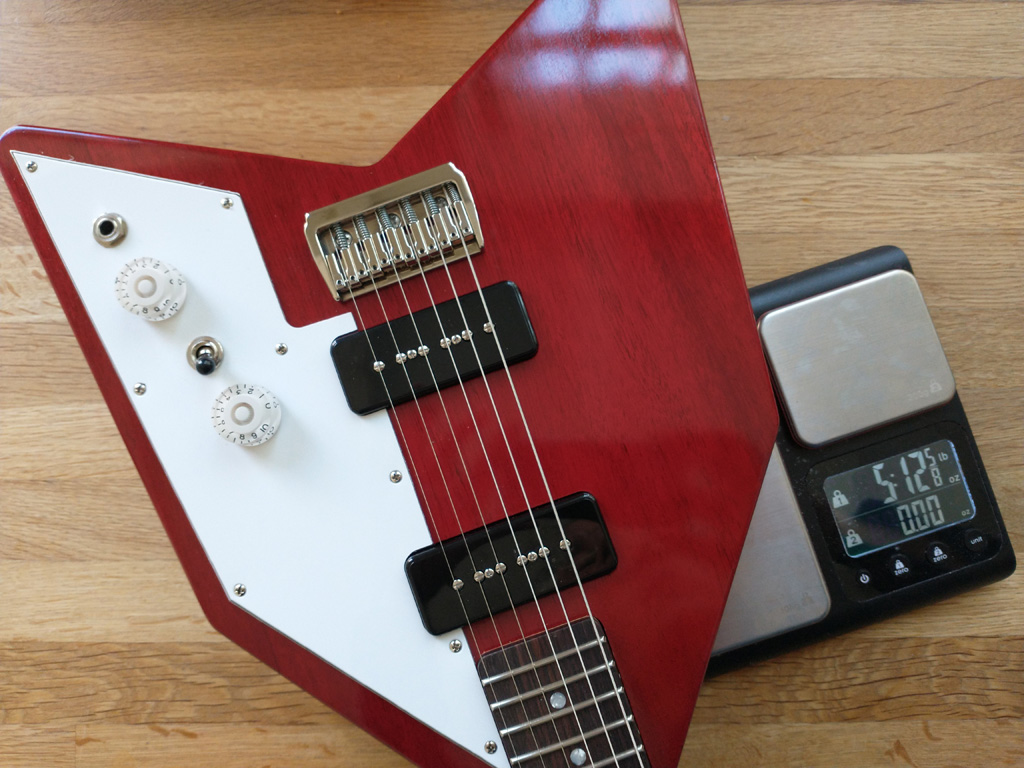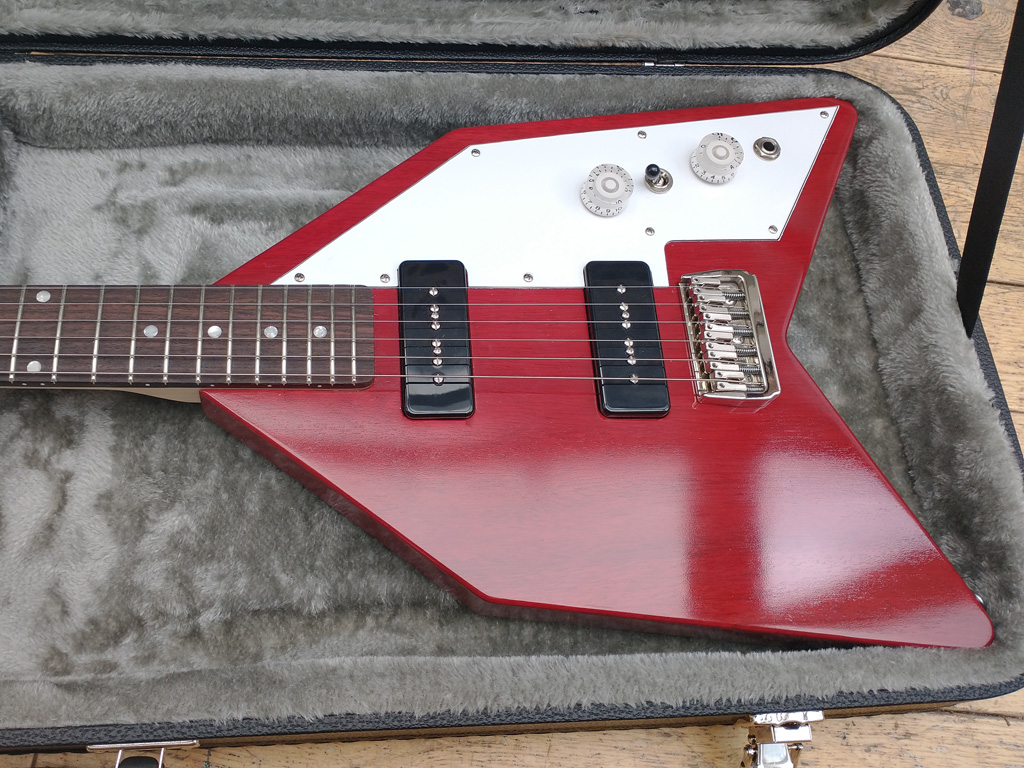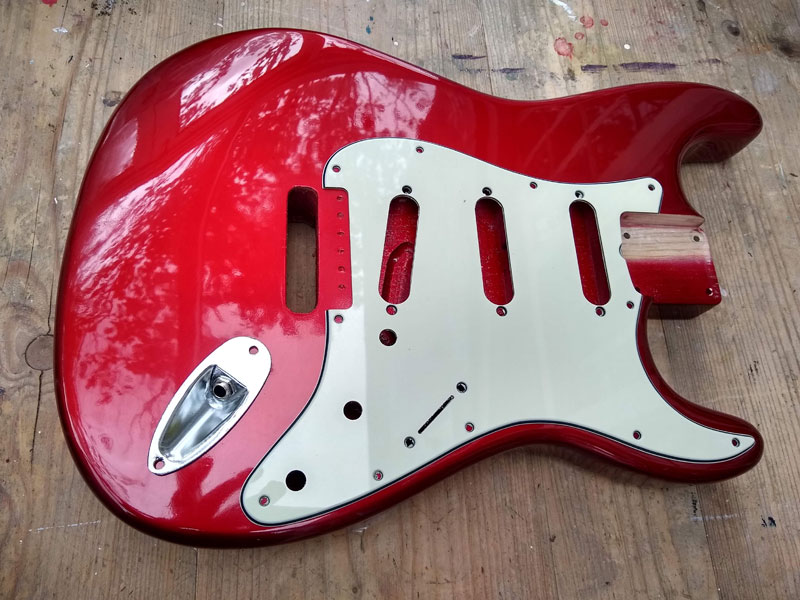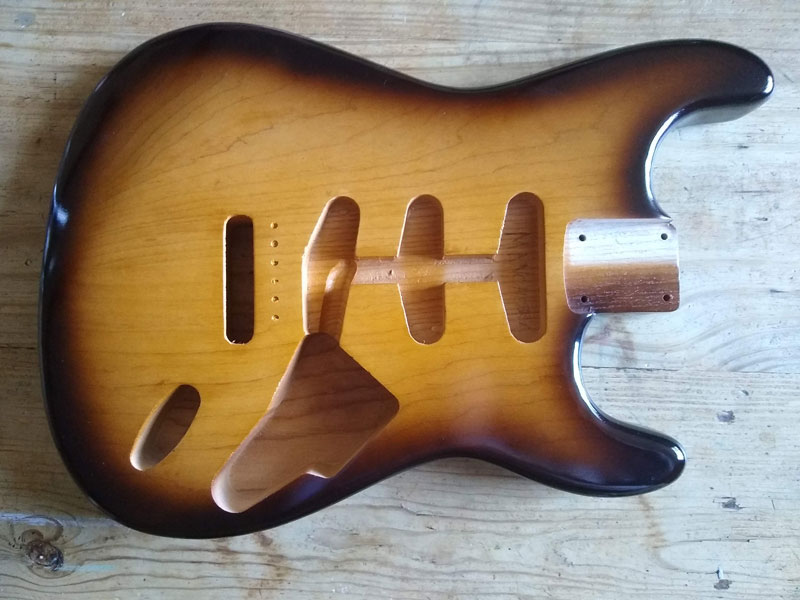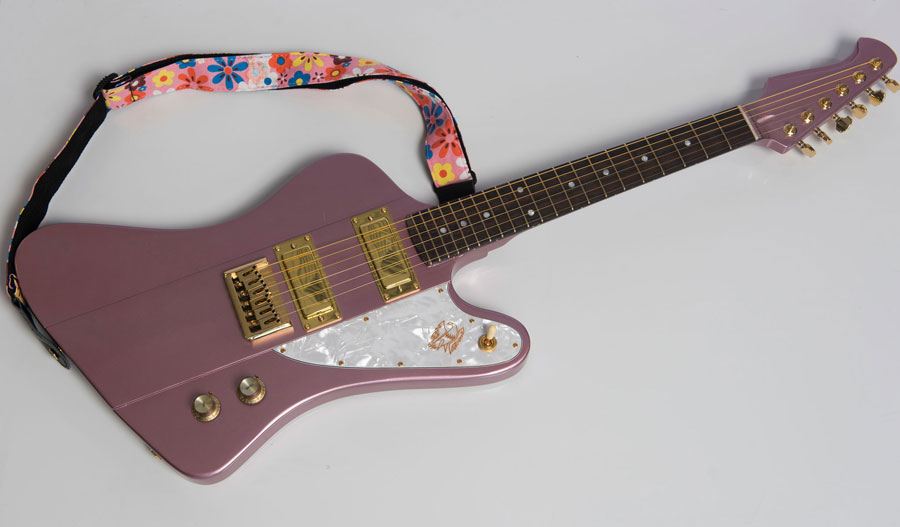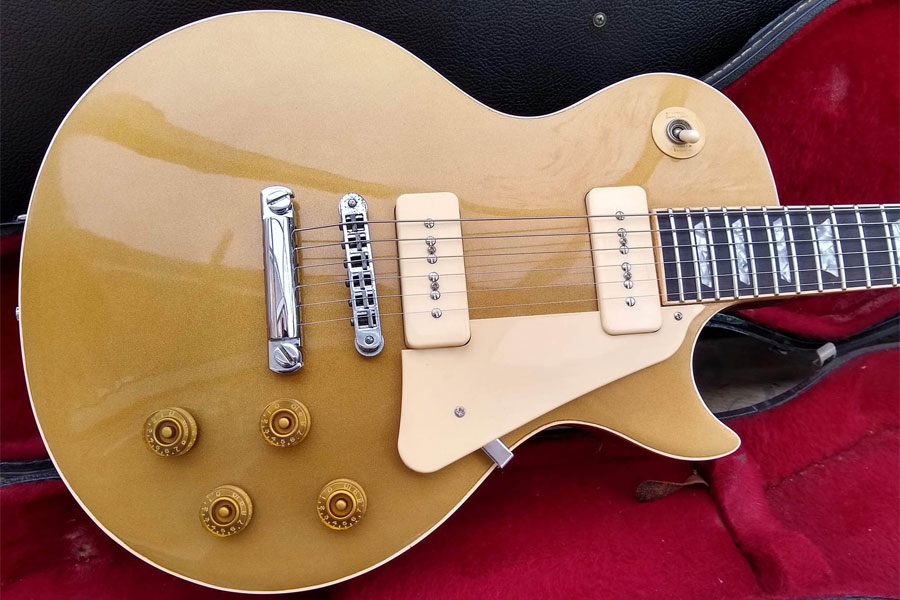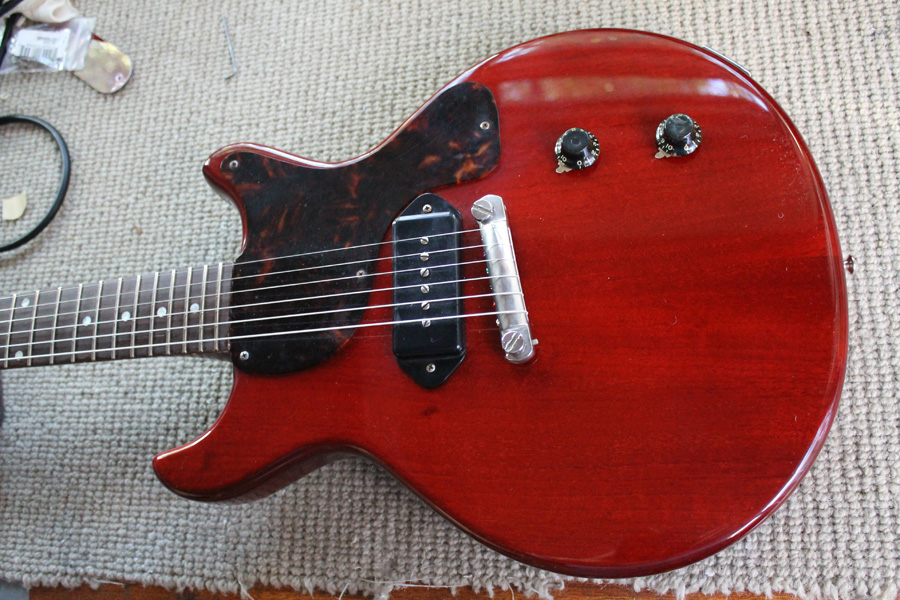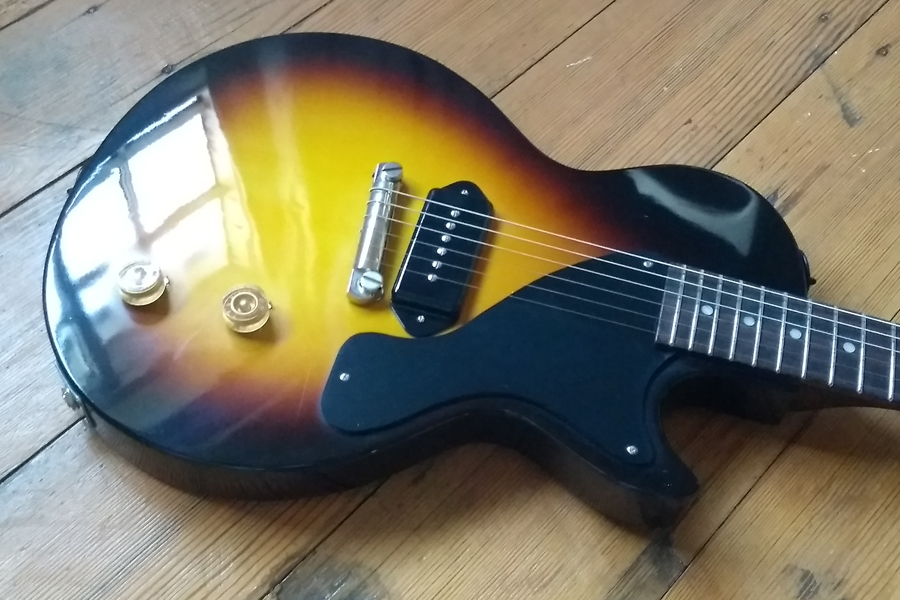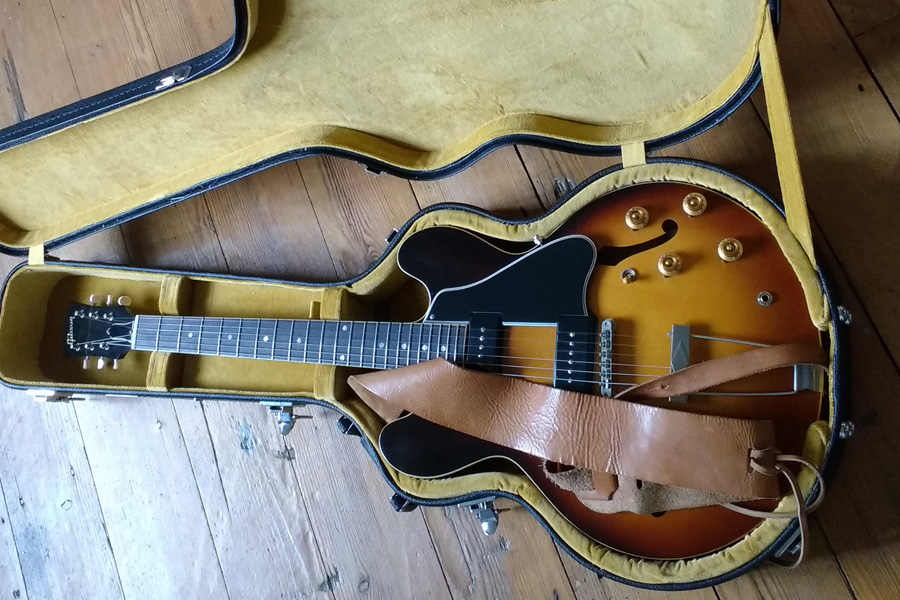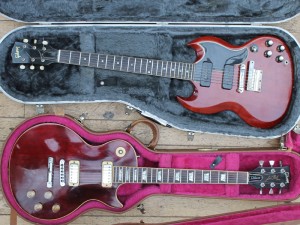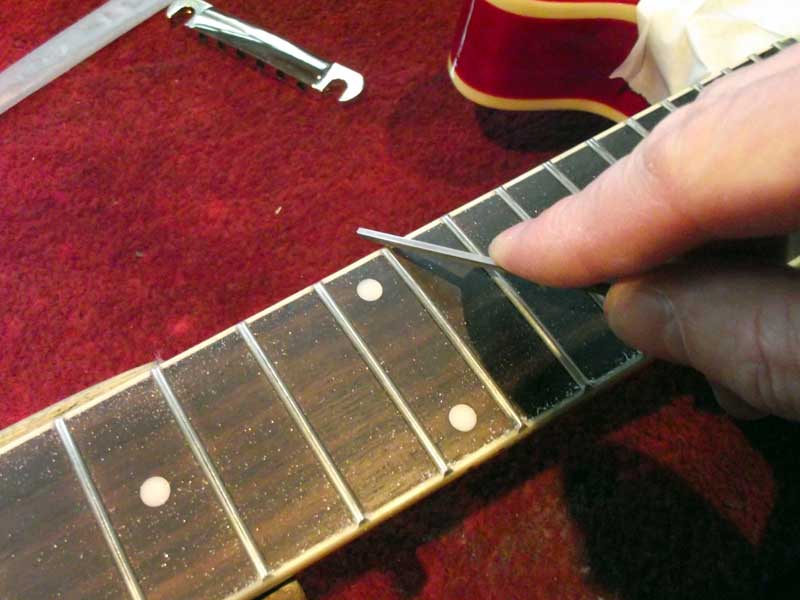
Ozzy Lister – guitar and bass repair
I had this brand new American Vintage Series ’64 Telecaster in for a setup.
Its owner pointed out the very narrow string spacing of the 1st and 2nd strings at the bridge.
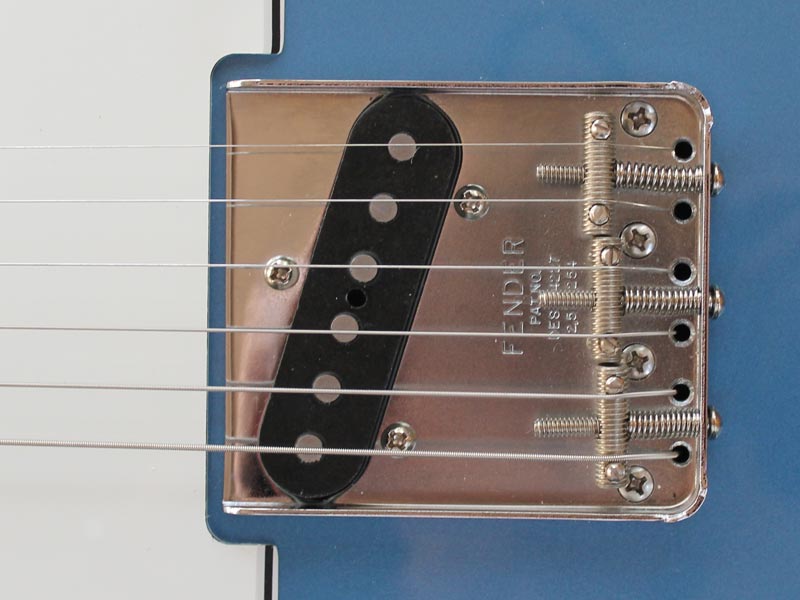
The first thing I tried was moving the strings apart, into the next slot. This however caused a problem in that the strings were now up against the height adjustment grub screws and were damped by them, so the strings didn’t ring out as they should.
I looked at other saddles and they had slots positioned at the right distance from the screw and had a lightbulb moment.
I removed the e/b saddle and turned it over, inserting the grub screws from the other side of course. When I re-fitted the saddle in the bridge, the threads were perfectly positioned for even string spacing.
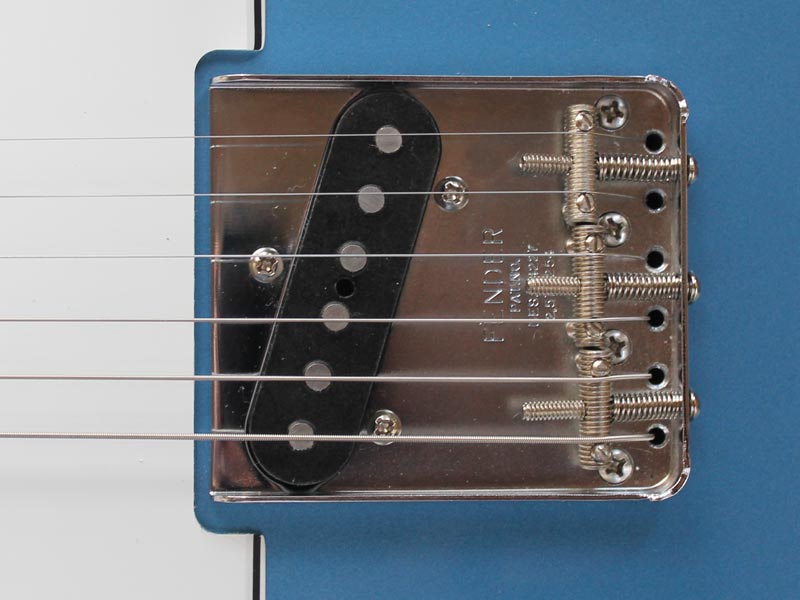
These two Vintage Gibsons came in, each needing a new nut.
The mid-1960s SG Special had a nut cut too low meaning that the unfretted strings were buzzing against the first fret. I replaced this with a nut made from bleached bone. I had to use an oversize blank as the person who previously replaced the nut had filed the slot a fraction of a millimetre too wide. Like all my replacement nuts, it was a perfect fit, highly polished and gleaming.
The 1980 Les Paul Deluxe had a different problem. The original nut was cut with the top e slot too close to the fretboard edge, exacerbated by worn frets, which meant that it was easy for the string to slip off the fret. On the new nut, I moved the slot in about a millimetre which should make all the difference.
Both of these guitars are great to play and sound fantastic. Of course when testing them I’ve been knocking out Who riffs!
At this time of year when guitars tend to be bought as presents I get asked if it’s necessary to have it set up, or it’s suggested that as it’s a new guitar it shouldn’t need very much doing.
Unless the buyer is extraordinarily fortunate, the answer is always “yes” and a new guitar can need more doing than one that’s been previously set up.
Most guitars are made to a price and budget instruments just don’t have the time spent on them to make them play as well as they can. Also, most guitars are made outside of the UK where the climate (temperature and humidity) is quite different and this can affect the wood. Common problems on new guitars are:
- Sharp fret ends. This can be due to insufficient attention at the factory or because the wood has dried out causing the fretboard to shrink slightly exposing the ends. A setup on a new guitar always includes a dress of the fret ends. This involves trimming them to the fretboard edge, rounding the ends and polishing to a high shine.
- Corroded frets. If the guitar has stood for any length of time ten the frets may have tarnished making for a rough, uncomfortable playing surface. A polish will soth that out.
- Uneven frets. This is less common but still a problem at the cheaper end of the market. Uneven frets will mean that the strings buzz and rattle when played at certain notes. This fix for this is a fret level and re-crown. Not included in a standard setup but doesn’t cost much more and well worth paying for if it’s needed.
- Nut slots. Almost without exception, new guitars are supplied with the nuts cut too high. Cutting nut slots is a skilled operation and if the tech goes too low, the nut is ruined. For this reason the factory doesn’t do a good job of this. A nut that is cut too high however will cause a couple of problems for the player. Firstly, the strings will be hard to press down on the first few frets. The notes at these frets will probably play sharp too because of the stretching of the strings required to fret them.
- The guitar’s “action”. The action of the guitar (how well it plays) is down to the neck relief and string height. Both of these are adjustable but rarely optimum on a new guitar. The neck relief is set by the truss rod and needs to be adjusted to suit the gauge of strings fitted. I see very many new guitars with no tension on the truss rod and a large amount of neck relief. I imagine that the truss rod is slackened for shipping from the factory and before delivery the shop just tunes the guitar strings without balancing the truss rod. The string height needs to be low enough that the guitar is easy to play but not so low that the strings buzz or choke when notes are bent. This is controlled by the bridge and/or saddle height and is generally too high on new guitars.
- Corroded strings. A new set of good quality strings is a must.
- Intonation. If you want the guitar to play in tune then the intonation must be correctly set. This is often the final job in a setup and depends on the above being right so you can see it’s rarely correct on a new guitar. The intonation is roughed out in the factory but needs to be accurately set using a strobe tuner.
So in conclusion, yes a new guitar will benefit from a setup and if you are paying several hundred pounds for an instrument, isn’t it worth paying a bit more and getting the best out of it?
You can see the components of a guitar setup and a guide to prices on this page.

